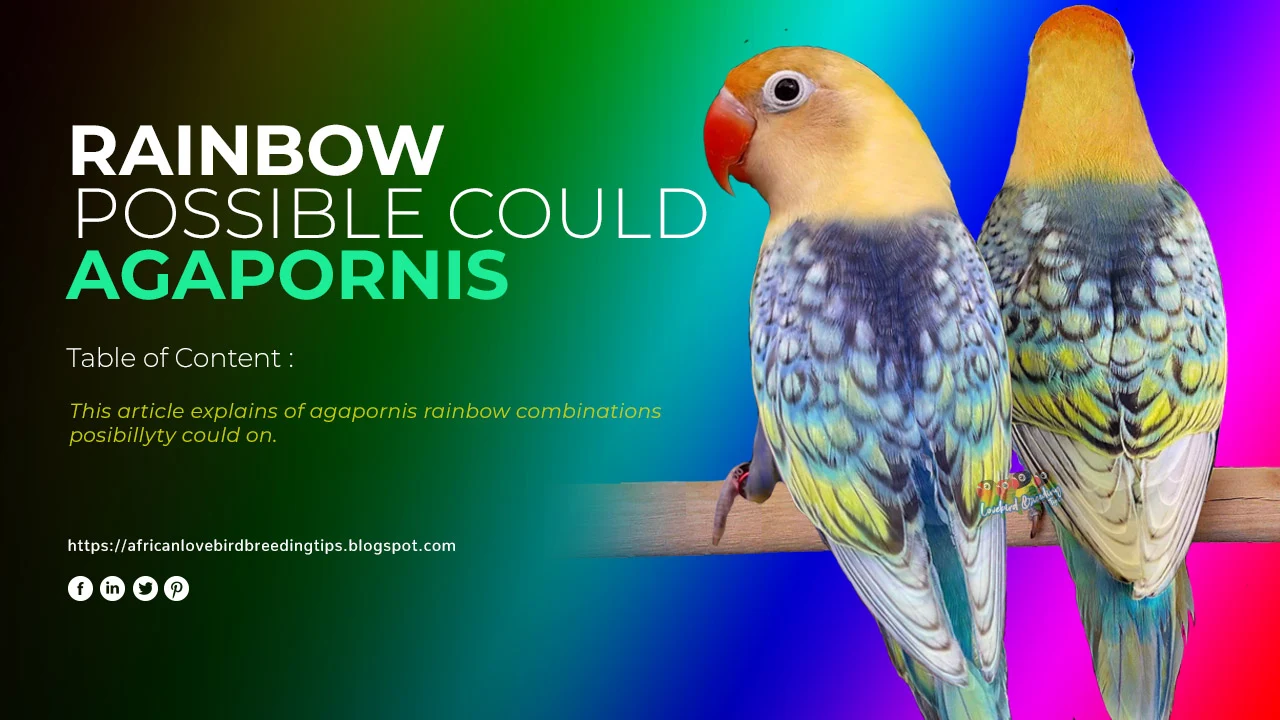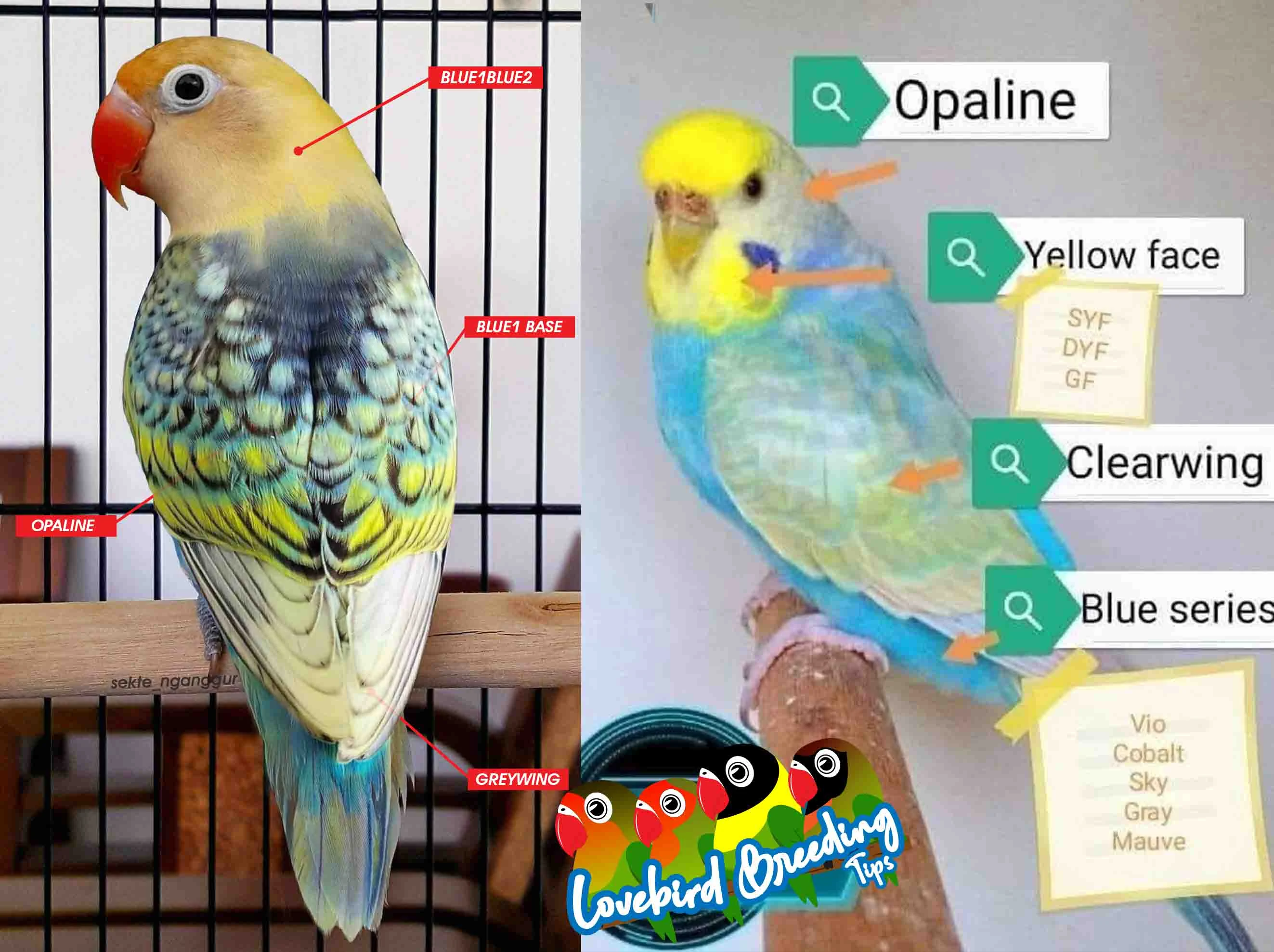African Lovebirds Rainbow? You know that some mutations in budgies that have been present in the past are also slowly appearing in other parrot species.
African Lovebirds are no exception; they have given a giant leap to the presence of several budgie mutations such as Opaline, greywing, spangle, and others, although not all are identical.
Because each species gives a different mutation effect, even though the name is the same, the role of varying feather structures in each species is the key to diversity.
Later on social media, many arguments emerged about presenting rainbows in African lovebird species.

It's not identical to what happens to the budgie species, but broadly speaking, in that direction.
If true, it might also be visually different from what you see on the rainbow budgie.
Can it be rainbow lovebirds?
Let's learn what a rainbow is in a budgie species; you need to know that the rainbow on a budgie is not a separate allele.
Rainbow budgie is a combination of mutations. Like you combine Opaline and euwing, the rainbow has a specific composition.
This means that a rainbow is not an independent allele but a phenotype resulting from a combination of mutated alleles.
Budgie has two types of rainbows: classic rainbows and rainbow spangles.
The Classic Rainbow Budgie is the one that shows the combination of mutations. It is explicitly defined as the clearwing opaline of the yellow-faced blue series (whitewing).
How to Produce a Classic Rainbow Budgie
– Both parents must be clearwing or split for clearing.
– Men should be opaline or split to Opaline.
– Both parents should be blue or separated for blue.
– One of the parents must be yellow-faced type 2.
While the rainbow spangle is as follows:
– One or both parents should be a spangle (but pairing two double factors won't work).
– Men should be opaline or split to Opaline.
– Both parents should be blue or separated for blue.
– One of the parents must be yellow-faced type 2.

To be brief, Rainbow Budgie is a combination, not a mutation. Rainbow Budgie involves at least four mutations in one bird.
- Blue based
- Clearwing
- Yellow Face
- Opaline
Could it be applied to lovebirds with a combination of mutations that already exist today?
- Replace Blue-based and Yellow Face with Blue1blue2 or Aqua. Or sapphire, by looking at them and always leaving a yellow psittacine trail on the feather area of this flight, that would be interesting.
- Replacing Clearwing with Greywing or Dominant Edged, which is White-winged. This is a little difficult because, at the dominant edge, it is very susceptible to degradation of the edge pattern when the flight feathers turn whiter and whiter.
It would be best to keep the Edged condition on a single Factor. That will enhance the firmer feather edge pattern.
- Given that the Opaline on the lovebird has brightly colored feather margins, can the Opaline on the lovebird change the structure of the feathers with dark-colored edges?
Combining Blue1blue2 with the dominant body feather color cloud blue + Violet Dominant Edge is the first step before being combined with Opaline.
It's just imagination, but it could happen in your aviary. It doesn't hurt to try immediately with the combination of the abovementioned mutations.
Good luck.
